(The graphs were predefined for you in Desmos - just click on the
individual graphs to experiment with these functions)
| Studying a centered parabola for stretches is not as
useful as
the shifted case. |
|

|
|
| |
|

|
|
Let's look at the case where the parabola
is asymmetrical to the y-axis and has two roots.
Notice:
- Horizontal contraction does not preserve
the roots, the x of the vertex, and thus does not preserve the axis
of symmetry.
- Horizontal contraction preserves the y of the
vertex, the y-intercept.
- Horizontal transformations are not propagating from the parabola's
axis of symmetry, they anchor rather on the y-inetrcept (try this on
the graph).
- Vertical dilation preserves the roots, the x of
the vertex and thus the axis of symmetry.
- Vertical dilation does not preserve the
y-intercept, y of the vertex,
|
|

|
|
| |
|
|
|
After changing the factor from F = 2 to F =
0.6, what was a contraction earlier becomes a dilation and vice
versa.
Regardless of the factor, the same elements are preserved as listed
above.
Play with the factor F in this graph (click on the image to do so)
and see what is affected. This will help you develop your intuition.
Notice also in contractions/dilations that it is the
geometric distances to the axes that are
contracted/dilated rather the Cartesian coordinates.
|
|
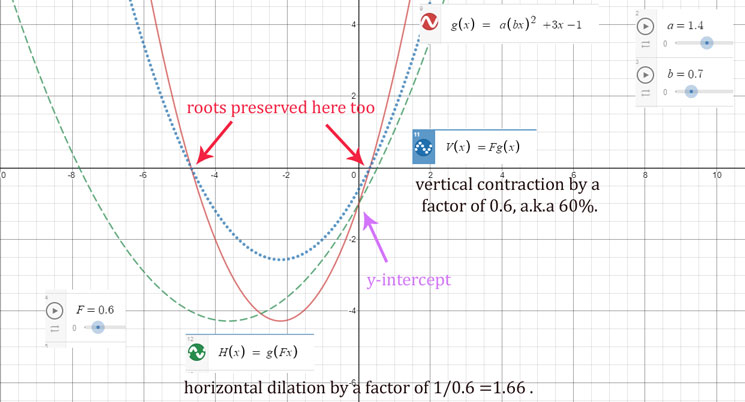 |
|
|
|
|
|
Do Radicals Behave Similarly to Parabolas During Stretches?
|
|
Click on the graph to experiment with the
transformation factor F.
It is easy to see the parallel between the horizontal stretches of
the radical

and the same mapping of F in the resultinng inverse

Therefore,
|
|
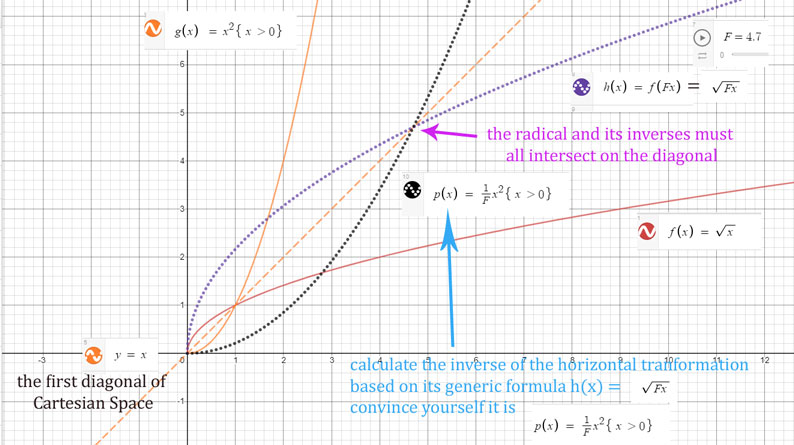
|
|
When tracking transformations to the
radical function, you can match these changes on the parabolas that
are the inverses of these transformations, i.e

A horizontal dilation by a factor of 2 in the
radical (see comments on the graph) is mirrored by a
horizontal contraction by a factor of 0.5 in the matching
inverse parabola.
To generalize:
A horizontal stretch (dilation or contraction) by a
factor of 1/F in the radical is mirrored by an
horizontal stretch by a factor of F in the matching
inverse parabola. Where the radical contracts the parabola dilates
and vice versa. This makes sense as it is the only way these
parabola - radical pairs maintain the same distance from the
mirroring diagonal y = x.
|
|
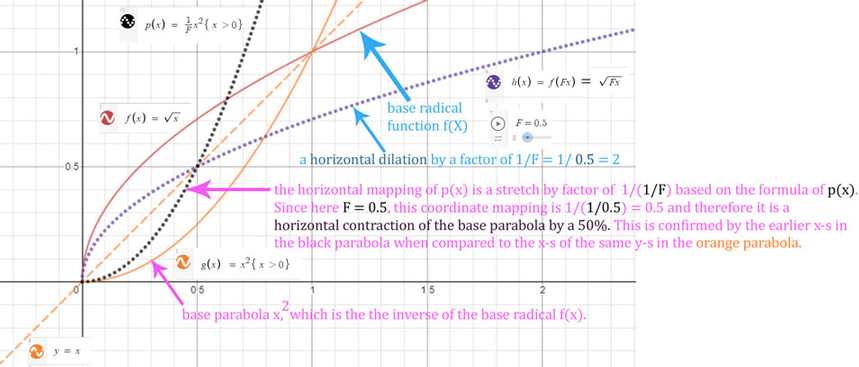 |
|
| |
|
|
|
Vertical vs. Horizontal stretches
of a radical.

In this case the vertical formula and this horizontal formula is
identical. Experiment with the graph to see that the dotted black
curve is always the same as the orange one. |
|
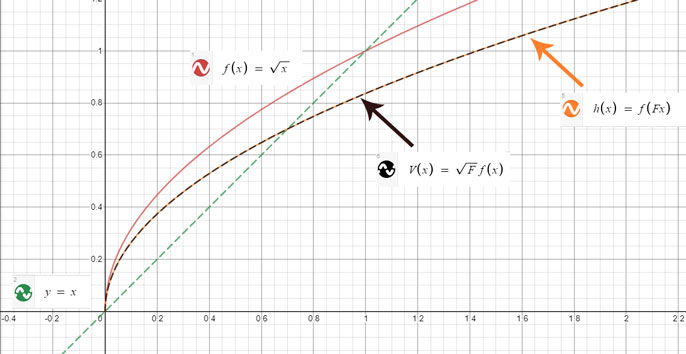
|
|
How about more comples formulas under the
radical?
- any horizontal factor can be converted into a vertical one and
vice versa when it comes to radicals. But vertical stretches are easier to
deal with because the factor of their mapping (i.e. on the
coordinates) is the same as the factor used by the function
transformation. In other words
(x, y) -> (x, F*y)
and
v(x) = F*f(x)
While in contracts the horizontal mappings are by a
factor of 1/F:
(x, y) -> (x, 1/F *y),
when the horizontal transformation function definition is
h(x) = F*f(x)
In other words, these two factors are reciprocal rather than
identical so attention is need to get the correct conclusion in
horizontal cases.
Click on the graph to play with the factor F and
see that the two - vertical and horizontal - (orange and black
respectively) overalp.
Therefore instead of dealing w/the horizontal version, just process
the vertical one.
|
|
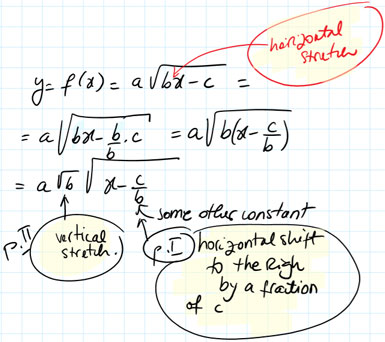
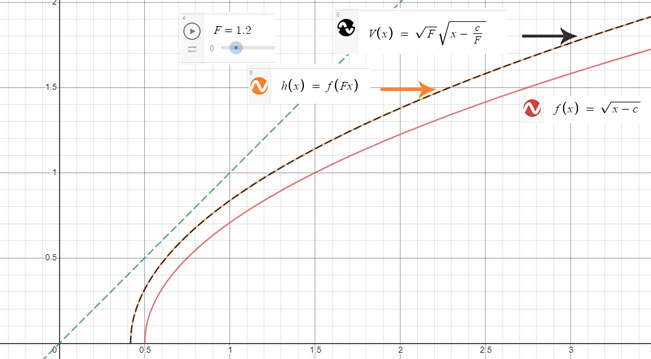 |
|











